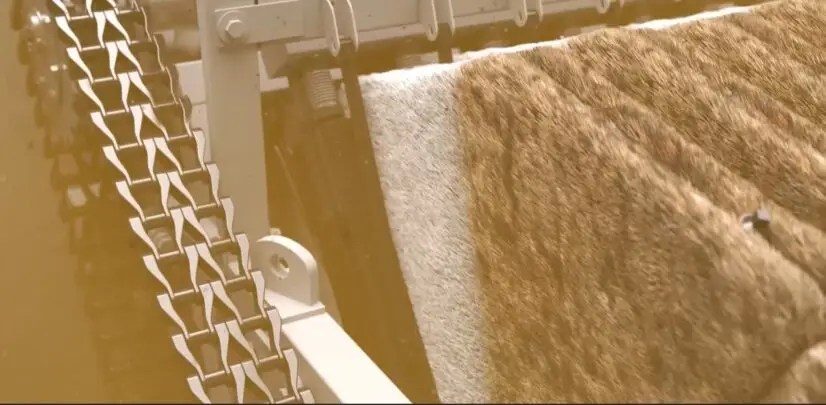The Backwashing Stage of Pile Cloth Media Filters: Process and Advantages

We have seen on several occasions how pile cloth media filters are an efficient solution for advanced suspended solids removal. What happens, however, when the free-fiber cloths start to get dirty? It becomes necessary to activate backwashing of the filter cloths.
When a predetermined level difference between filter inlet and outlet is reached, backwashing of the cloths is activated: a system of pumps, connected to a series of suction nozzles, removes the retained solids from the cloths, restoring the filtering capacity of the machine. The sucked water and removed sludge are sent back to the head of the treatment plant. Any solids settled at the bottom of the filter tank are removed by means of a timed pump.
Let’s take a look at some more details about this fundamental step in the process of the operation of pile cloth media filters.
1. Backwashing of pile cloth media filters: how it is done
The automatic backwashing process in cloth media filters is critical to maintaining efficiency and functionality over time. Let’s see how it works.
- Solids accumulation. With use, suspended solids in the water to be treated accumulate on the outer surface of the filter cloth.
- Automatic activation. As the solids layer increases, the hydraulic resistance of the filter increases. When the level difference between water inlet and outlet reaches a predefined value, the backwash cycle is automatically activated.
- Backflow. During backwashing, a flow of filtered water is pumped in the opposite direction of normal filtration (thus from the inside to the outside of the cloth). This flow breaks down the layer of sludge deposited on the surface of the cloth and releases the trapped solids. In the course of backwashing, the fibers are lifted inside the suction device, so that the solids, previously retained, can be easily removed by the countercurrent water flow.
- Continuous filtration. Importantly, backwashing occurs without interrupting water filtration. This is a significant advantage over other filtration systems that require periodic stops for cleaning.
In summary, automatic backwashing is a simple and efficient process that keeps filter cloths clean and ensures the continued operation of cloth media filters.
2. Advantages of backwashing pile cloth media filters
Backwashing in pile cloth media filters offers several advantages in terms of energy savings, operational continuity and overall convenience of the water filtration process.
Here are some of the key points.
- Energy saving. Automatic suction backwashing requires low power consumption compared with other cleaning systems that use high-pressure pumps instead.
- Operational continuity. The filtration process is not interrupted during backwashing, ensuring continuity of production. This aspect relates directly to business continuity management, a key concept for companies that need stable production processes.
- Cost effectiveness. Low energy consumption and operational continuity result in a more cost-effective filtration process than systems that require frequent stops or high-consumption backwashing.
In conclusion, automatic suction backwashing is an efficient process that helps reduce operating costs and improve the overall efficiency of the water treatment system.

3. The citric acid wash
Pile cloth media filters ensure continuity of operation even during ci backwashing of the fleece.
However, at intervals of 1-2 years, more vigorous washing is necessary. Thus, in order to achieve truly superior cloth pile cleaning, MITA Water Technologies proposes washing the cloths with citric acid. This is almost the only time in the life cycle of the system when downtime is required.
The procedure first involves emptying the basin in which the equipment is housed. This process is carried out by means of the sludge drain pump, included with the filter, operated from the control panel.
At this point, citric acid solution is prepared within the basin itself and automatically recirculated for a predetermined period. At the end of this period, the now exhausted solution is sent back to the head of the system and the filter can be put back into operation.
Ask for InformationResources
Needs of wastewater treatment
Discover the solution for all needsComparing different technologies
Find out all the different technologiesFind out more
All technical articlesOur Newsletter
Sign up for the MITA Water Technologies newsletter: stay up-to-date on systems for municipal and industrial wastewater treatment and filtration.